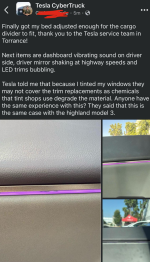Minor digging finds something from a couple of years ago that each cartridge is 400mm long and 180mm diameter, and the target weight was 5 kg; whether they've achieved that or not ... unknown. I can't find how much volume (i.e. weight) of hydrogen is contained in each one, but I did find "When electricity is generated by a typical FC system, one hydrogen cartridge is assumed to generate enough electricity to operate a typical household microwave for approximately 3-4 hours (based on the assumption of using a future iteration, high-pressure hydrogen tank with an electricity output of approximately 3.3 kWh/unit.)."
Toyota and Woven Planet develop new portable hydrogen cartridge prototype to power everyday applications - Toyota Media Site
Hmmm ...
Hydrogen at 700 bar pressure (I have no idea if that's what they're designing for, but it's become pretty standard) has a density of 39.6 grams per litre, call it 40 g/L. A cylinder of the dimensions above has a volume of 10 litres based on the outside dimensions and you have to subtract from this the volume of the cylinder walls (which will be significant). So ... 400 grams of hydrogen maximum. You would need about 12 of these cylinders to equal the contained hydrogen volume in a Toyota Mirai. And 12 of them would have a capacity of about 40 kWh based on what's stated in the above link. I'm thinking the contained hydrogen volume is rather less than this (due to wall thickness, rounded corners, etc). You would need 18 of them to match the battery capacity of my Chevy Bolt. 18 of them x 5 kg = 90 kg; this is less weight than the battery in the Bolt but we haven't included the weight of the fuel cells and their supporting hardware AND the (smaller) battery pack that a fuel-cell vehicle still needs.
Laid out transversely 2 wide x 9 the length of the vehicle x 1 thick gives "pack" dimensions of 800mm across the width of the car and 1.6 metres along the length of the car, plus something for clearances and crash structures and the like. This is in the same ballpark as the dimensions of a lithium-ion battery of the same capacity (it's a little smaller but you still need "a" lithium-ion battery in a fuel-cell vehicle - just smaller).
So do you want to "refuel" by hand-bombing 18 of these 5 kg containers into wherever they're stored in the vehicle every 400 km ... or just plug the darn thing in?
I can see the use case for camping and so forth, to replace propane-fuelled cooking or generators. Maybe there's a use case for urban scooters and the like, which could make do with a couple of those containers to have 6.6 kWh of equivalent capacity (but fuel cells and so forth will make for a mighty complex and expensive scooter).

 arstechnica.com
arstechnica.com






























